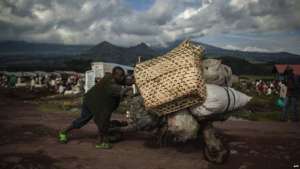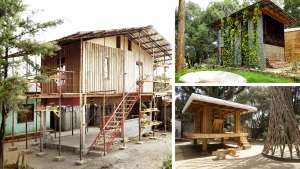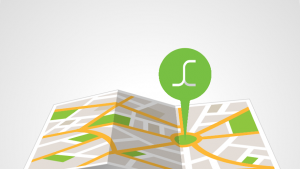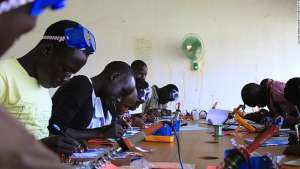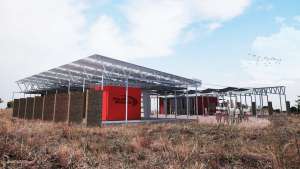In the Democratic Republic of Congo’s capital, Kinshasa, robot traffic officers are commonplace. In the capital, where the roads are jam-packed, pedestrians are in danger and drivers defy the rules of the road. Authorities felt that they needed an innovative intervention to tackle this problem because traffic officers were falling short.
So they enlisted the skills of industrial engineer Thérèse Izay Kirongozi to develop humanoid robots that would regulate traffic in the country’s capital. The first generation robot, installed in 2013, was deployed to protect pedestrians crossing one of the main roads in Kinshasa – Boulevard Lumumba. This first robot, which towers over pedestrians at two-and-a-half meters tall can raise one robotic arm and bend the other, regulating traffic on one end and allowing passengers to cross on the other.
The first robot was also programmed to give pedestrians spoken commands, telling them to wait or cross the road.
Later that same year, authorities commissioned Kirongozi to build another robotic officer. This officer, powered by solar energy, is stationed in front of the Congolese parliament and raises his arms like his human counterpart would to stop traffic and allow cars to go.
This year, Congolese officials commissioned and installed an additional three robots: Tamuke, Mwaluke and Kisanga. The latest additions to the robotic force have a faster reaction time. “The electronic components work much better now than the ones from the first generation,” Kirongozi told AFP.
Tamuke, Mwaluke and Kisanga all have rotating chests and video cameras built into their eyes to send footage back to a central office.
Congolese officials opted for the robotic model because Kinshasans have reported that they mistrust human traffic officers. Since the robotic models have been deployed, officials have reported fewer incidents on the road and Kinshasans have reported that the traffic surrounding the robotic officers has been eased.
But other Kinshasans have criticised the robots for being an expensive intervention, with each robot costing the Congolese government $27 500.
The images in this article are courtesy of Brian Sokol, who shot these images as a part of a #FutureofCities, a social documentary initiative backed by Panos Pictures and Sony.
Similar Content
![25 May 2014 - Africa Day. 25 May 2014 - Africa Day.]() Design News• 25 May 14
Design News• 25 May 14![Legson Kayira Community Center and Primary School in Malawi by Architecture for a Change. Image: Architecture for a Change. Legson Kayira Community Center and Primary School in Malawi by Architecture for a Change. Image: Architecture for a Change.]() Design News• 8 Jun 14
Design News• 8 Jun 14





